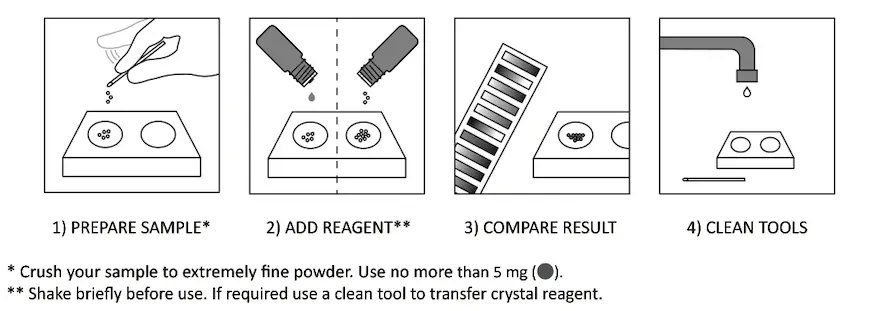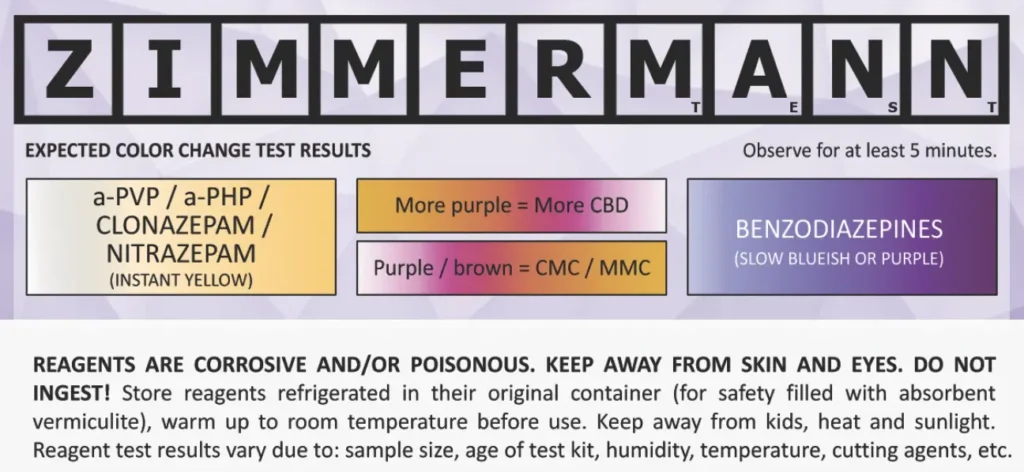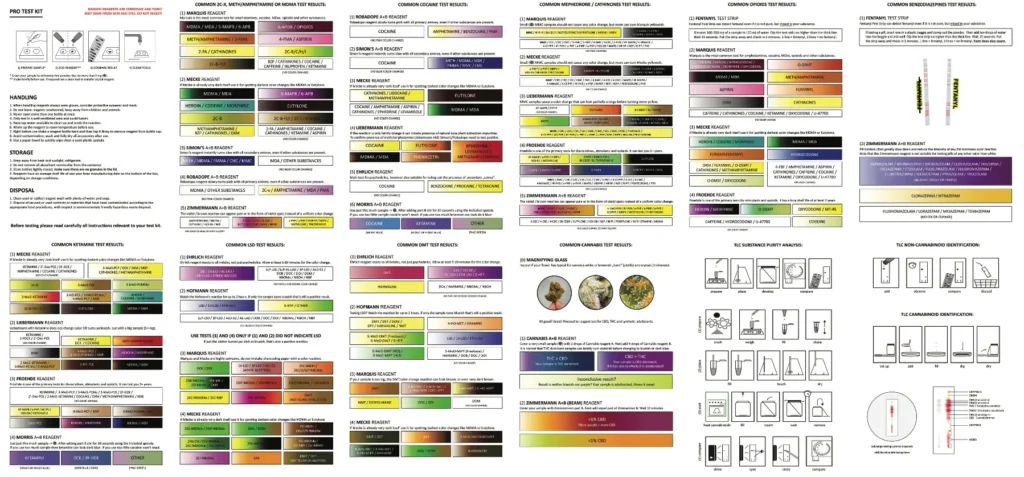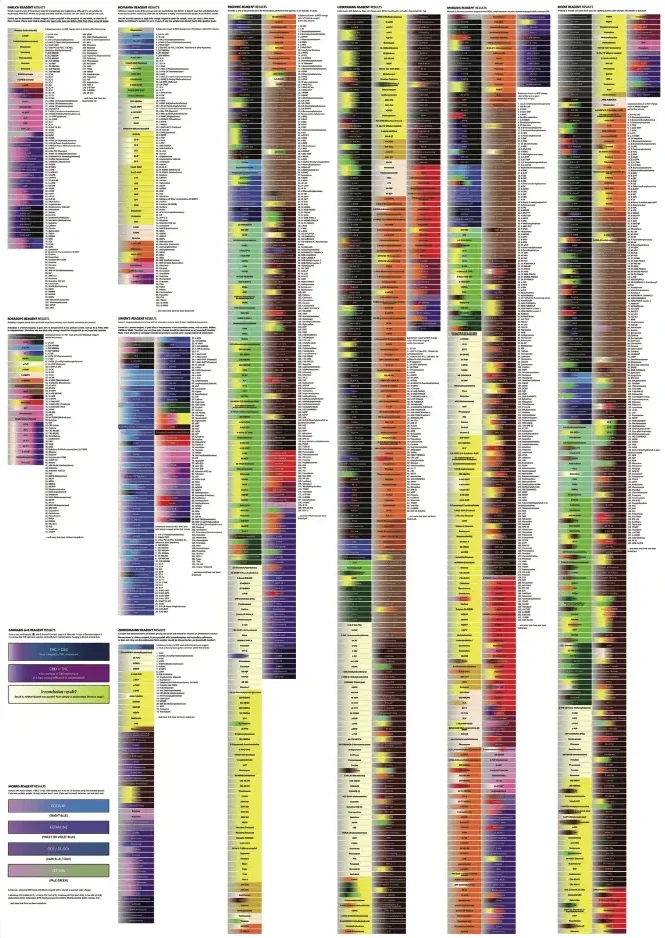Zimmermann Reagent Test Instructions
The Zimmermann drug testing reagent test, a widely employed spot-test in chromatography, serves as a preliminary identification method for various compounds, especially benzodiazepines and alkaloids, in the realm of drugs testing. Comprising a two-component solution, it consists of 1% w/v 1,3-dinitrobenzene in methanol for the first component, and 15% potassium hydroxide in water for the second. Upon adding a drop of each component to the substance under examination, the resultant color change aids in discerning the compound’s nature. Notably, the reagent operates by generating a distinctive reddish-purple Meisenheimer complex at C3 for diazepines featuring a carbonyl at C2 and an alkyl group at N1, crucial for the formation of the methylene compound that reacts with dinitrobenzene. The test’s namesake, American biochemist Robert Zimmermann (b.1937), adds historical significance to its usage and recognition within the scientific community.
Zimmermann reagent is a common drug testing kit for crystals, powders, pills or plants. Zimmermann test is best for benzodiazepines, cathinones, CBD and more.
How to test?

Questions?
Still searching for the best test kit?
Click here to see our full offer, or here for single-use kits, or here for all multi-use kits including TLC purity testing kits.
A positive or negative Zimmermann testing kit result does not indicate if a substance is safe. No substance is 100% safe.





